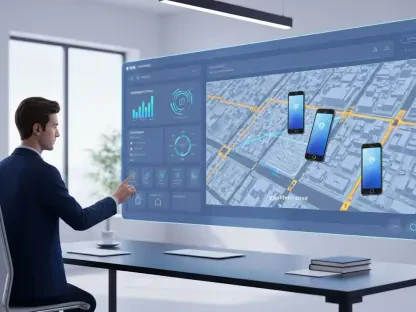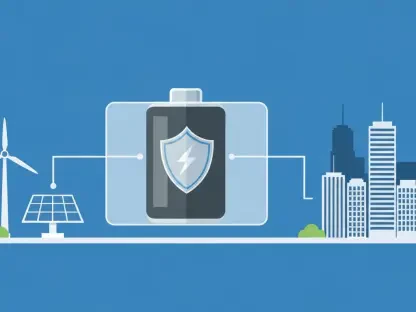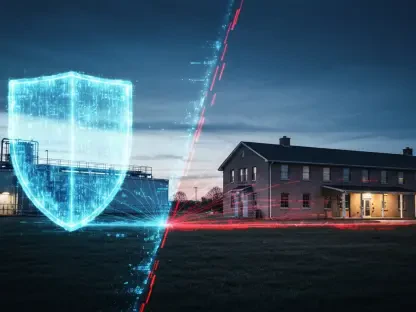In today’s fast-paced business landscape, where decisions must be made with precision amid overwhelming data streams, imagine a scenario where a multinational corporation faces a critical IT project delay that risks millions in losses, yet no one in leadership has real-time visibility into the issue until it’s too late. This is a common challenge in organizations relying on outdated dashboards that merely report historical data. Strategic Control Tower Technology emerges as a game-changer, offering a dynamic, AI-driven platform that not only monitors but anticipates and guides decisions in real time. This review delves into the evolution, capabilities, and transformative potential of this technology, shedding light on how it redefines business intelligence and decision-making across industries.
Understanding Strategic Control Tower Technology
Strategic Control Tower Technology represents a paradigm shift in how organizations manage and act on data. Unlike traditional dashboards that provide static snapshots of performance, this technology serves as a centralized, dynamic platform powered by artificial intelligence to enable real-time decision-making. It integrates data from multiple functions—IT, finance, operations, and beyond—into a unified view, ensuring that stakeholders have actionable insights at their fingertips rather than fragmented reports.
The evolution from basic dashboards to control towers aligns with the broader wave of digital transformation. Where dashboards once focused on visualizing key performance indicators for specific projects, control towers now act as mission-critical tools that orchestrate business processes. They prioritize not just visibility but proactive intervention, marking a significant leap in the ability to navigate complex, fast-moving environments with clarity and confidence.
This shift underscores the technology’s role in business intelligence, where the emphasis is on agility and foresight. By moving beyond mere reporting, control towers empower organizations to detect risks, forecast outcomes, and align actions with strategic goals, fundamentally changing how decisions are made in high-stakes scenarios.
Core Components and Features
Unified Data Integration
At the heart of Strategic Control Tower Technology lies its ability to integrate diverse data sources into a single, cohesive platform. Data from IT systems, financial records, human resources, and operational metrics are pulled together, eliminating silos that often hinder decision-making. This unified approach ensures that all relevant information is accessible in one place, providing a comprehensive view of organizational health.
The importance of data consistency cannot be overstated in this context. Leveraging cloud-based data lakes and structured data models, control towers facilitate real-time analytics by ensuring that data is standardized and reliable across systems. This infrastructure allows for seamless updates and synchronization, addressing past issues of delays or inconsistent formats that plagued traditional setups.
Such integration transforms raw information into a strategic asset. By enabling instant access to harmonized data, control towers allow organizations to respond swiftly to emerging challenges, whether it’s a supply chain disruption or a budget overrun, without the lag that once characterized decision-making processes.
AI-Driven Predictive Analytics
Artificial intelligence stands as a cornerstone of control tower capabilities, turning vast datasets into actionable guidance through predictive analytics. AI models within these platforms analyze historical and real-time data to forecast potential issues, such as project delays or resource shortages, before they escalate. This predictive power is a stark contrast to reactive approaches of the past.
Beyond forecasting, AI employs rule-based logic for anomaly detection and proactive alerts, flagging deviations like budget overruns or operational bottlenecks. Scenario planning features further enhance this capability, allowing stakeholders to simulate different outcomes and choose the most effective course of action. These tools ensure that decision-making is not just informed but anticipatory.
The impact of AI in control towers lies in its ability to guide rather than merely inform. By transforming complex data into clear, strategic recommendations, this technology empowers leaders to act decisively, minimizing risks and optimizing outcomes in ways that static dashboards could never achieve.
Role-Based Customization
Customization is another defining feature of Strategic Control Tower Technology, ensuring that insights are relevant to specific user groups within an organization. Executives, delivery managers, and operational teams each access tailored views that align with their roles and responsibilities. For instance, a C-suite leader might see high-level metrics tied to strategic objectives, while a project manager focuses on detailed execution data.
This personalization extends to aligning metrics with broader business goals, ensuring that every dashboard reflects key results and priorities. By filtering out irrelevant information and focusing on what matters most to each user, control towers enhance adoption and engagement across all levels of an organization.
The significance of such tailored interfaces is evident in their ability to drive speed and relevance in decision-making. When users interact with data that directly pertains to their objectives, the likelihood of actionable outcomes increases, fostering a culture of accountability and strategic focus throughout the enterprise.
Evolution and Emerging Trends
Strategic Control Tower Technology has undergone a remarkable transformation, moving from static reporting tools to dynamic platforms that orchestrate business processes. Early dashboards provided periodic updates, often weekly or monthly, but lacked the agility required in today’s volatile markets. Modern control towers, by contrast, offer live visibility and real-time intelligence, reflecting a fundamental shift in how data is utilized.
Current trends point to an increased reliance on AI as a driver of innovation within this space. Machine learning algorithms are becoming more sophisticated, enabling deeper insights and more accurate predictions over time. Additionally, there is a growing emphasis on integrating control towers with other emerging technologies, such as IoT devices, to further enhance data collection and responsiveness.
A cultural shift toward agility also shapes the evolution of this technology. Organizations are increasingly prioritizing adaptability, recognizing that static approaches no longer suffice in rapidly changing environments. This trend suggests that control towers will continue to evolve as central hubs for navigating uncertainty, reinforcing their status as indispensable tools for modern enterprises.
Real-World Applications and Impact
Across industries, Strategic Control Tower Technology demonstrates remarkable versatility in addressing complex challenges. In IT project management, for example, control towers track project cycle times and sprint velocities, enabling teams to identify bottlenecks and adjust timelines proactively. This real-time oversight prevents costly delays and ensures alignment with delivery goals.
In financial oversight, the technology proves equally valuable by unifying data from disparate systems to monitor budget adherence and detect deviations early. Operational efficiency also benefits, as seen in use cases like resource allocation optimization, where control towers provide insights into workforce distribution and capacity planning, maximizing productivity without overburdening teams.
The broader organizational impact is profound, as these applications foster transparency and trust among stakeholders. By providing a single source of truth, control towers break down communication barriers, ensuring that decisions are evidence-based and aligned across departments, ultimately driving better outcomes in competitive markets.
Challenges and Limitations
Despite its potential, Strategic Control Tower Technology faces significant hurdles that must be addressed for widespread adoption. Data quality remains a primary concern, as inconsistent or incomplete datasets can undermine the reliability of insights. Ensuring data trust requires rigorous validation processes, which can be resource-intensive for many organizations.
Integration complexities also pose challenges, particularly when connecting legacy systems with modern platforms. Disparate formats and sync lags often complicate the unification of data, necessitating substantial investment in infrastructure and expertise. These technical barriers can slow down implementation and limit immediate benefits.
Cultural resistance within organizations adds another layer of difficulty. Shifting from traditional reporting to dynamic orchestration demands a mindset change, which some teams may resist due to unfamiliarity or fear of disruption. Ongoing efforts to improve collaboration, iterative development, and stakeholder buy-in are essential to overcoming these obstacles and realizing the technology’s full potential.
Future Outlook and Potential
Looking ahead, Strategic Control Tower Technology is poised for significant advancements that could further redefine organizational decision-making. Enhanced AI capabilities, driven by continuous improvements in machine learning, are expected to deliver even more precise predictions and automated recommendations, reducing human intervention in routine decisions over the coming years.
Broader adoption across sectors also appears likely, as industries beyond IT and finance—such as healthcare and logistics—recognize the value of real-time intelligence in managing complexity. This expansion could position control towers as universal tools for navigating uncertainty, particularly in environments where rapid response is critical to success.
The long-term impact may see control towers becoming the central nervous system of enterprises, orchestrating not just data but entire workflows. As businesses face increasing volatility, the ability to anticipate and adapt through such technology will likely determine competitive advantage, shaping strategic priorities for decades to come.
Conclusion and Key Takeaways
Reflecting on the exploration of Strategic Control Tower Technology, it becomes evident that this innovation marks a pivotal shift from passive reporting to active orchestration of business outcomes. Its ability to integrate data, leverage AI for predictive insights, and customize experiences for diverse users stands out as transformative in enhancing decision-making across industries. The journey reveals both its immense potential and the hurdles of data quality and cultural adaptation that need addressing.
Moving forward, organizations should prioritize building robust data validation frameworks to ensure trust in control tower insights. Investing in stakeholder training and phased implementations proves effective in easing the transition, fostering a culture ready for dynamic tools. As a next step, exploring integrations with emerging technologies like IoT could amplify the scope of real-time intelligence, ensuring that control towers remain at the forefront of navigating business complexity with agility and precision.









